For Lesson Three we'll add and build on the lessons and material from lesson two.
For Lesson Three we'll add and build on the lessons and material from lesson two.
In lesson three you'll learn the following:
- Learning the Fingerboard, Key Fret (7)
- Primary Chords for G Major (G, C, and D)
- Three Finger - Three Note Fingering Drills
- Core Strumming Pattern One
- Understanding Intervals
NOTE: Although these lessons are presented as a weekly series, you can and should take as long as you like to master each week's lesson as there is a lot of material in each lesson in the series.
The individual lessons in this series are viewable from the Lessons button bar above.
Learning the Fingerboard, Key Key Fret (7)
You might have noticed that the Fingerboard lesson is always the first topic we cover in each week’s lesson – it is that important.
The third of the key frets with no sharp or flat notes - only natural notes is fret (7) is D G B E from strings four to one. If you are coming to ukulele from guitar you might recognize these as the names of the thin four strings of a standard tuned guitar.
- LESSON: Learning the Fingerboard, C Tuning - Fret (7))
- LESSON: Learning the Fingerboard, C Tuning - Derived Frets
From this weeks fret (7) D G B E you get fret (8) D# G# C F and the fret (6) Db Gb Bb Eb.. We also go Fret (6) from fret (5) in week two’s lesson. Each fret on the ukulele can have more than one name depending on the context the note is being used. For the purpose of names the notes any correct name if fine.
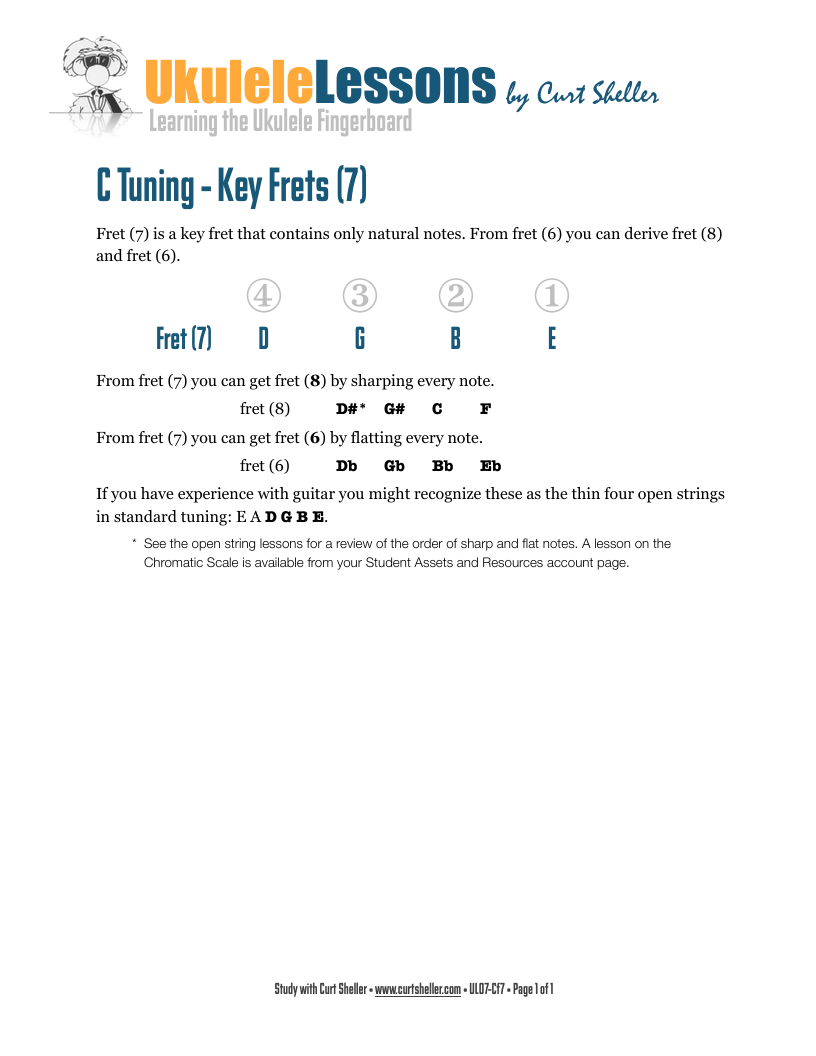
Technique - Three Finger - Three Note Fingering Drills
The Ukulele Gymnastics series contains quite a few lessons for developing your finger strength and independence of the fretting hand. The fretting hand is responsible for playing chords and single notes. The fretting hand and plucking hand are responsible for getting the music out.
- LESSON: Fingering Gymnastics
- LESSON: Three Finger - Three Note Fingering Drills
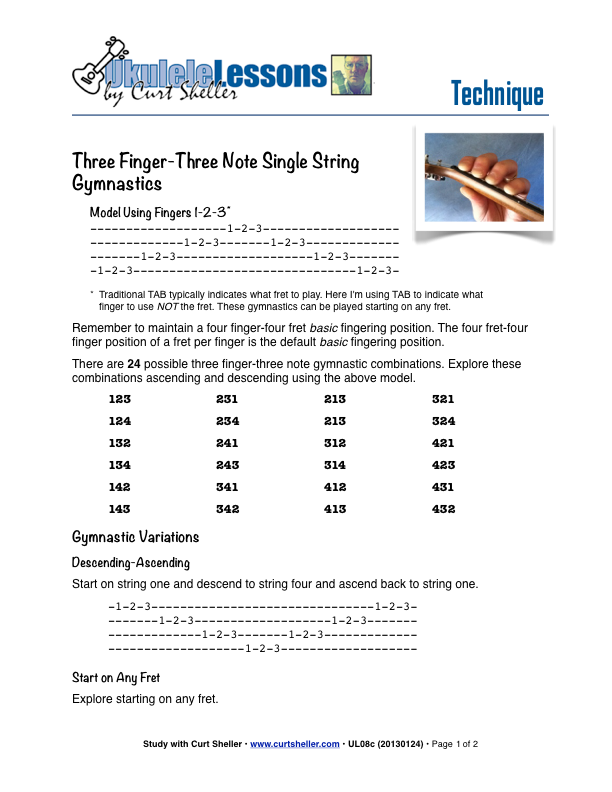
Primary Chords - G Major
The key of G major is on of the common keys that include C, G, D, A, and E. For guitar G is really common and a comfortable singing key for most males.
As we learned in week one’s lessons - the primary chords are the three major chords that are the main chords of the key. The primary chords create the tension and resolution in music that gives a chord progression emotion – a feeling of rest and resolution or consonance and dissonance.
Learn the G, C, D and D7 open position chords. With these four chords you can play countless songs in the key of G major.
- Series: Key Signatures - G Major and E Minor
- LESSON: Primary Chords of G Major
Use The Quarter Note strum and focus on switching between G, C, D, and D7.




Ultimately any chord can go an any chord so practice all the following combinations:
- G to C
- G to D
- G to D7
- C to D
- C to D7
- C to G
- D to D7
- D to G
- D to C
- D7 to G
- D7 to C
- D7 to D
This will cover all possible connections. Practice switching at a SLOW tempo and slowly increase the tempo as you get comfortable with the chords.
Visualize the next chord while you are on the current chord.
With these three chords you can play a lot of songs. Try a few of the ones listed below.
- LESSON: Bingo
- LESSON: This Train
- LESSON: Red River Valley
- LESSON: Danny Boy
- LESSON: Brown Eyed Girl
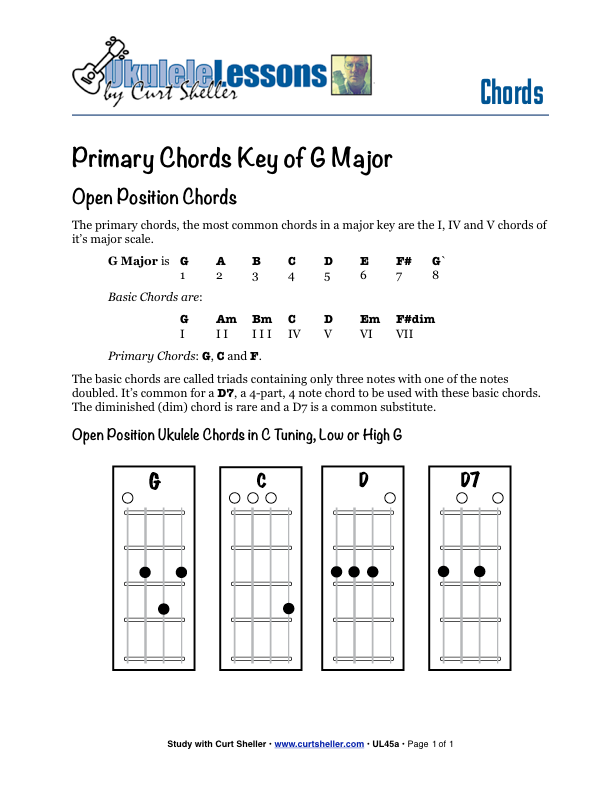
Core Strumming Pattern One
After the basic Quarter Note strum there are four core strumming patterns that can get you started. These are four of the most used strums in contemporary music.
This is the first of the four core strumming patterns. Theses are some of the most famous strumming patterns used.
- LESSON: Core Strumming Pattern One
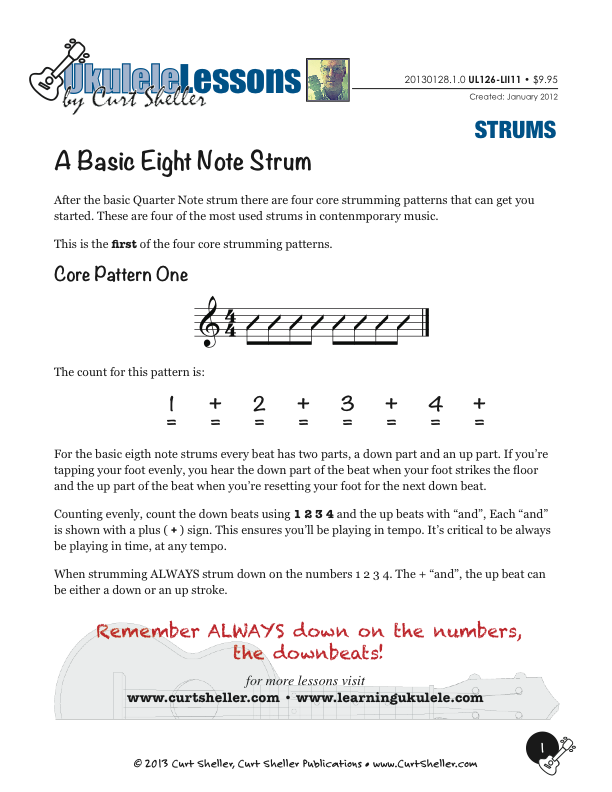
Understanding Intervals
An intervals is simply the distance from one single note to another single note. They have and name and distance.
- LESSON: Understanding Intervals
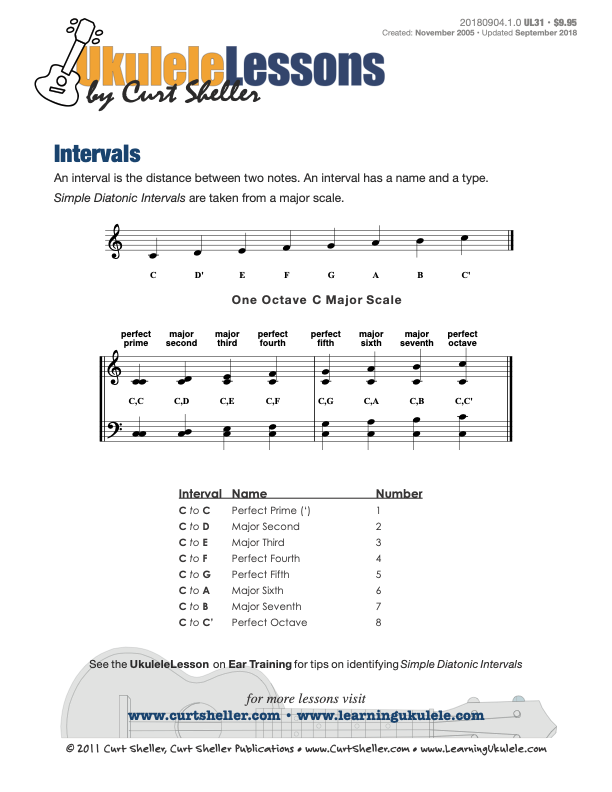
Related Lessons, Videos, Lesson Series, Songs, Books & Reference Charts, Resources & Assets, Workshops are below.

An interval is the distance between two notes. An interval has a name and a type. Intervals can be played one note (melodic) or two notes (harmonic) at a time, ascending or descending. Simple and Compound Intervals are taken from a major scale. Chromatic Intervals are NOT taken from a major scale. They are derived from the diatonic intervals.

Harmonic Analysis (HA), also known as the study of chord relationships, is the method used to identify the harmonic role of chords within a chord progression or song. A chord progression refers to a sequence of chords, with each chord having a root note and belonging to a specific chord type. The function of a chord within a particular scale's tonality is determined by its relationship to that scale.

Modular Phonetic Rhythm represents a significant advance in the teaching and application of rhythm. Eliminating many inefficient aspects of rhythm education, Modular Phonetic Rhythm streamlines the traditional educational approach, resulting in a reflexive reaction to rhythm.
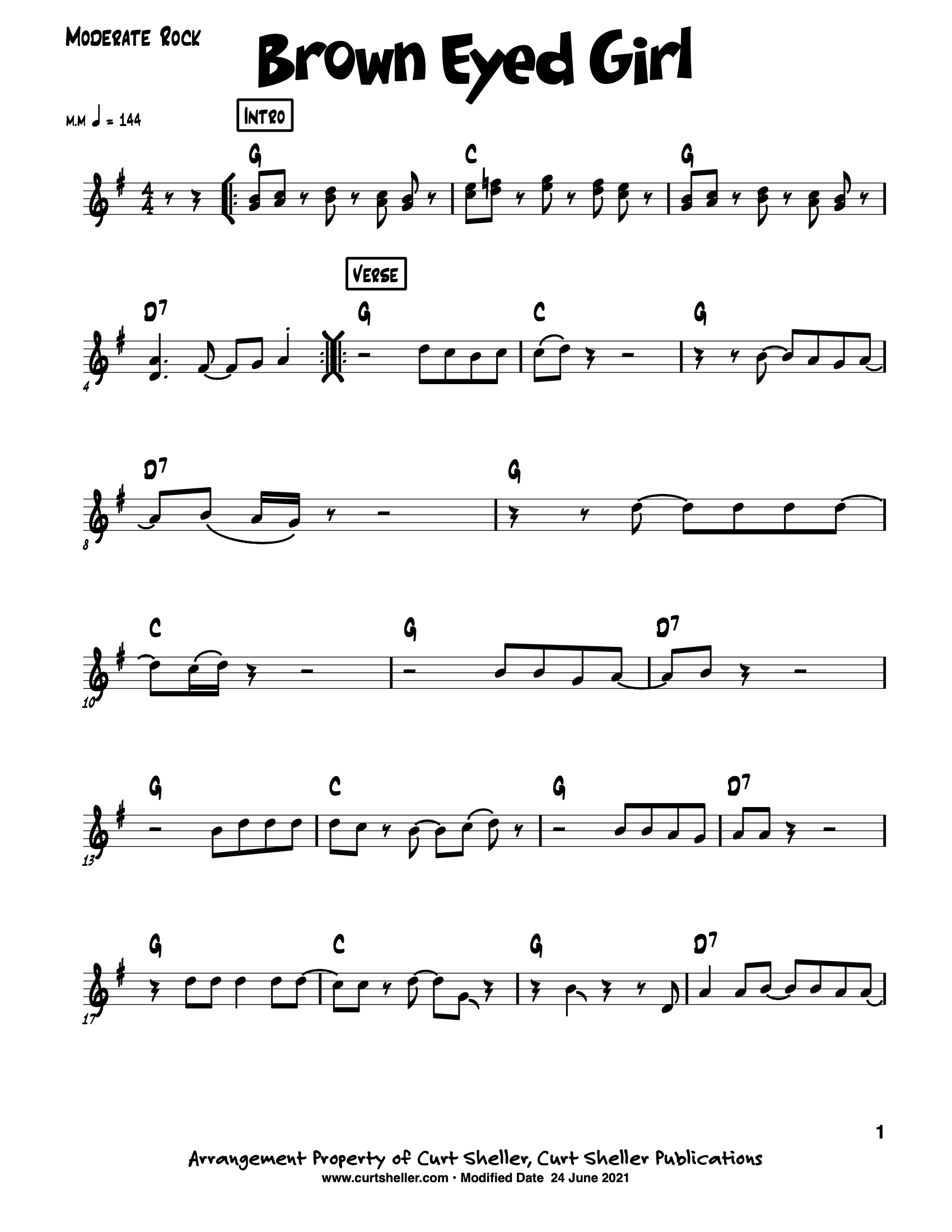
Brown Eyed Girl is a song by Northern Irish singer-songwriter Van Morrison. Written and recorded in 1967 by Van Morrison and produced by Bang Records chief Bert Berns, it was first released in May 1967 on the album Blowin' Your Mind!. When released as a single, it rose to number eight on the Cashbox charts, and reached number ten on the Billboard Hot 100.
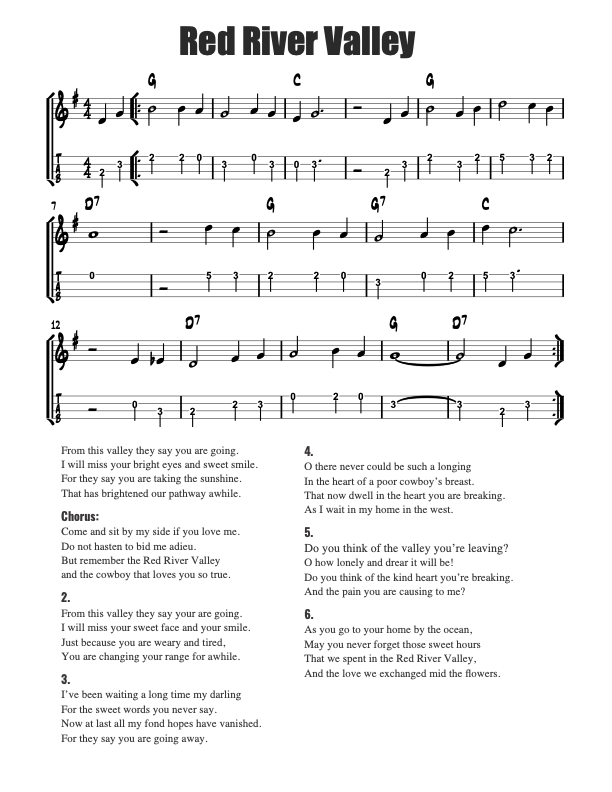
Red River Valley is a folk song and cowboy music standard of controversial origins that has gone by different names—e.g., "Cowboy Love Song", "Bright Sherman Valley", "Bright Laurel Valley", "In the Bright Mohawk Valley", and "Bright Little Valley" — depending on where it has been sung.

Finally, learn the names of the notes of the fingerboard. Learning the notes of your instrument allows you the flexibility of not having to remember so many shapes. There are simply way too many chords, scale and notes patterns, and shapes to remember. It all comes down the notes.
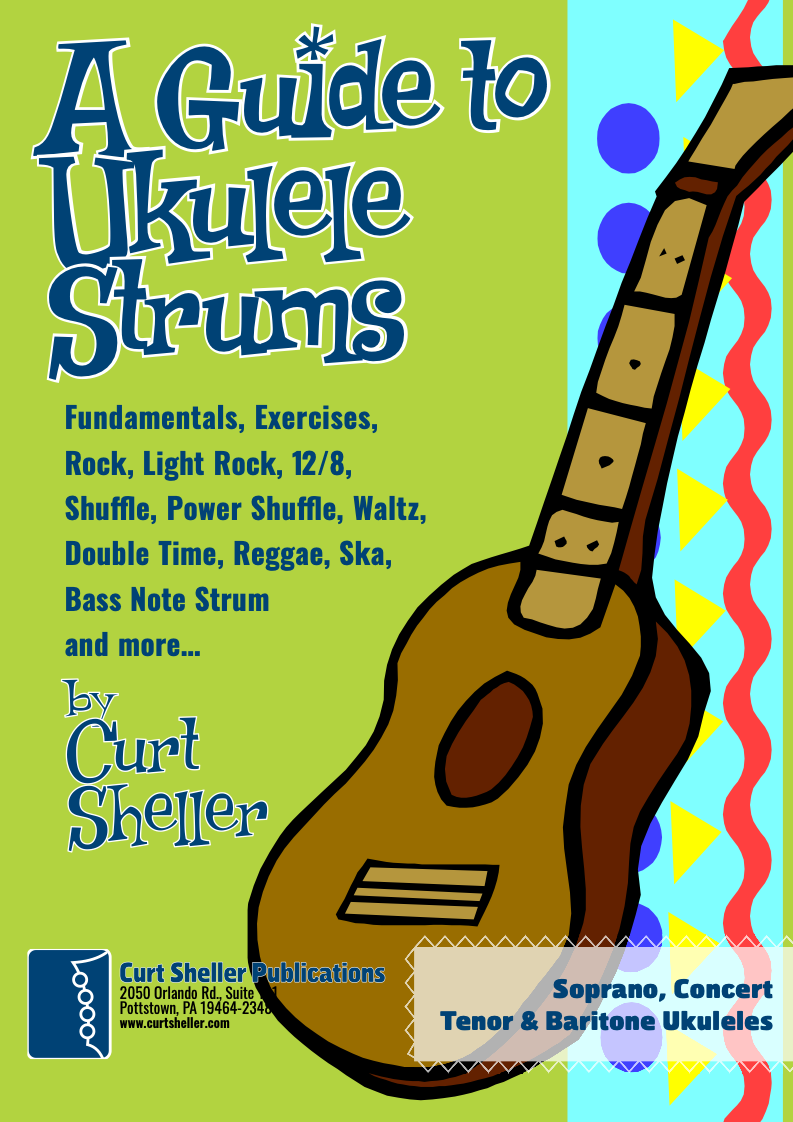
Learn a variety of strums and rhythmic patterns in wide range of musical styles. One of the first skills a ukulele player learns is the art and craft of strumming, playing rhythm. This refers to an accompaniment technique suitable for the singer, singer - songwriter or someone who plays a support role for another instrument.

Finally, learn the names of the notes of the ukulele fingerboard in C tuning .

Learn the six fingering principles to navigating the ukulele fingerboard. Fingering is one of the most universal topics. Book: Six Secrets of the Ukulele Fingering

Harmonic Analysis is the understanding of the functional sequence of chords. It is the process used to analyze the harmonic structure of a progression, song or composition. Book: Harmonic Analysis for Scale Selection and Chord Substitution

Learn to read single note melodies in the first/open position is a lot easier than you might think. Book: Ukulele – Reading Music Series – Primer

An organized collection of daily practice and reference material for the contemporary ukulele player for developing the vocabulary and knowledge necessary for single note playing. Book: Daily Practice Material for the Contemporary Ukulele
Checkout the Books & Reference Charts for additional Handy, Dandy Reference Charts.

Ukulele Fingerboard Chart for C Tuning, Low or High G – G C E A

Ukulele Fingerboard Chart for G Tuning, Low or High A – D G B E

A handy reference chart of all 15 major and relative minor key signatures. US Letter 8.5 x 11 sized (ANSI-A), A4
Checkout the Books & Reference Charts for additional Handy, Dandy Reference Charts.
Getting Started with `Ukulele - Lesson Three.



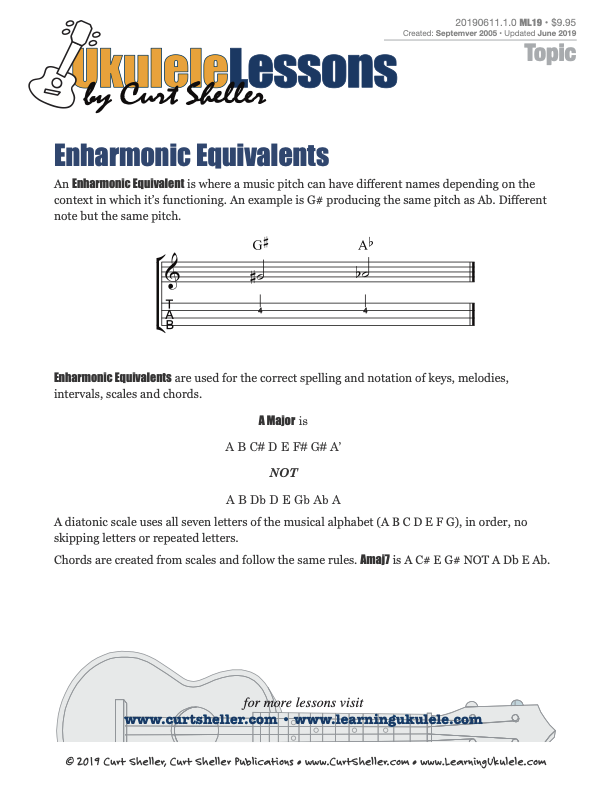
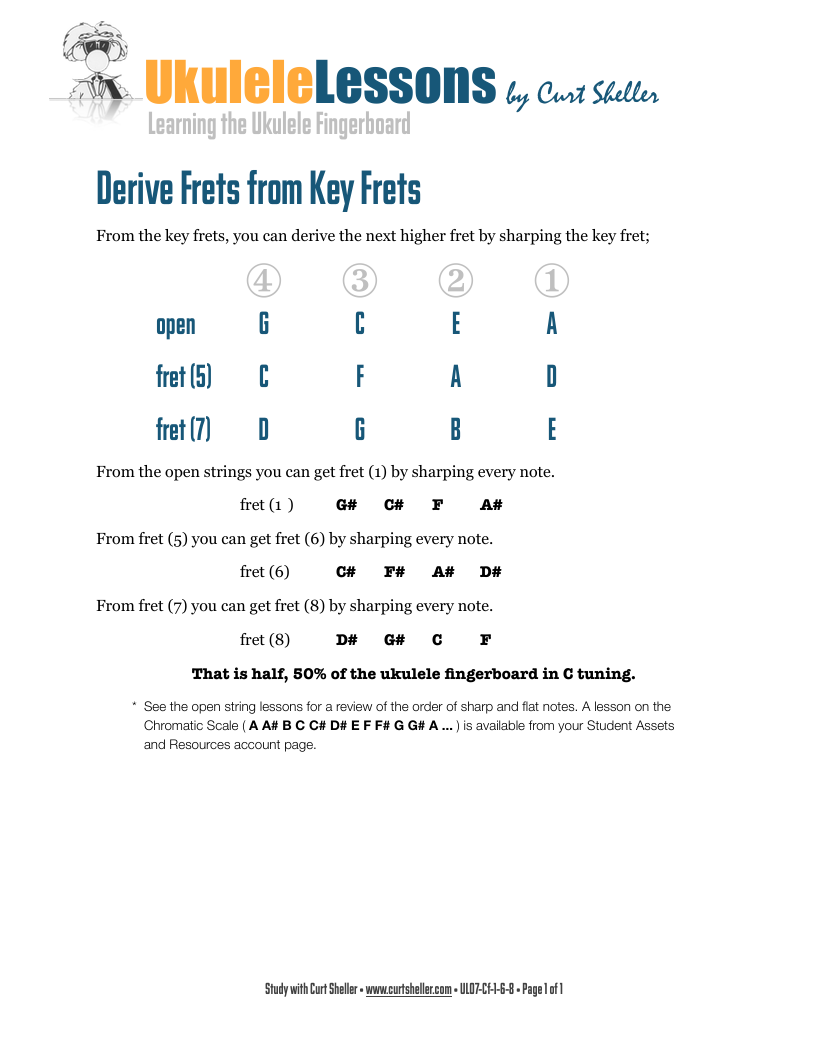
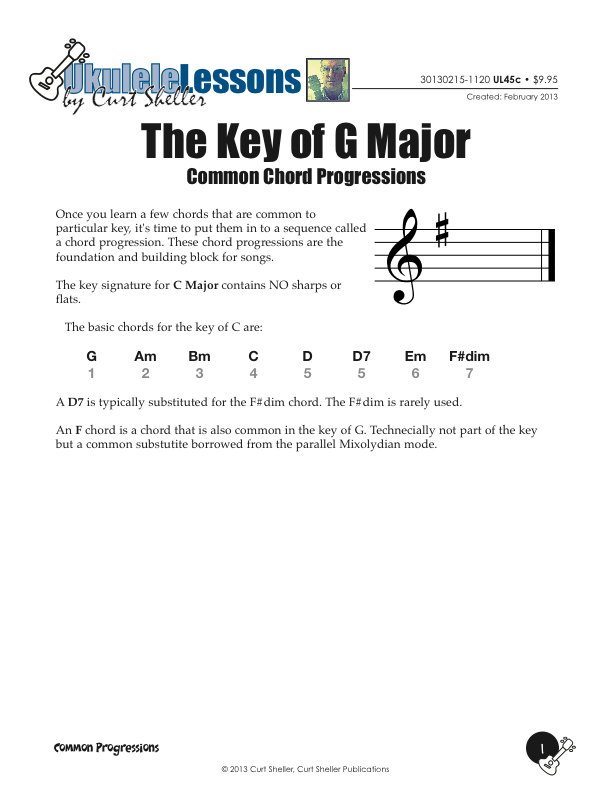
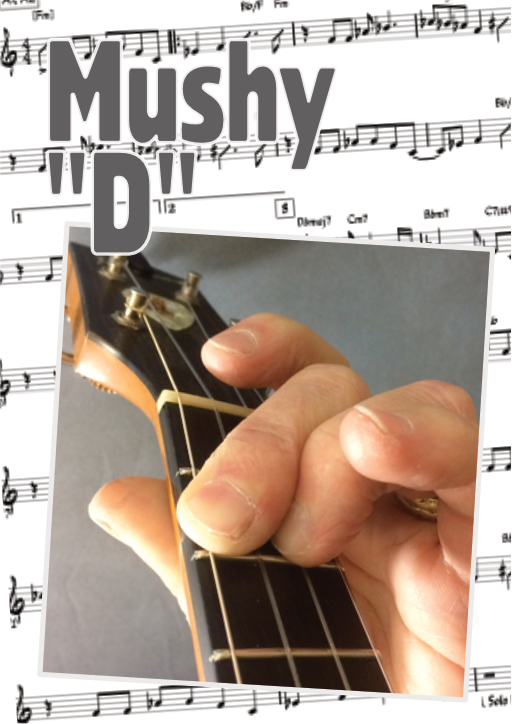






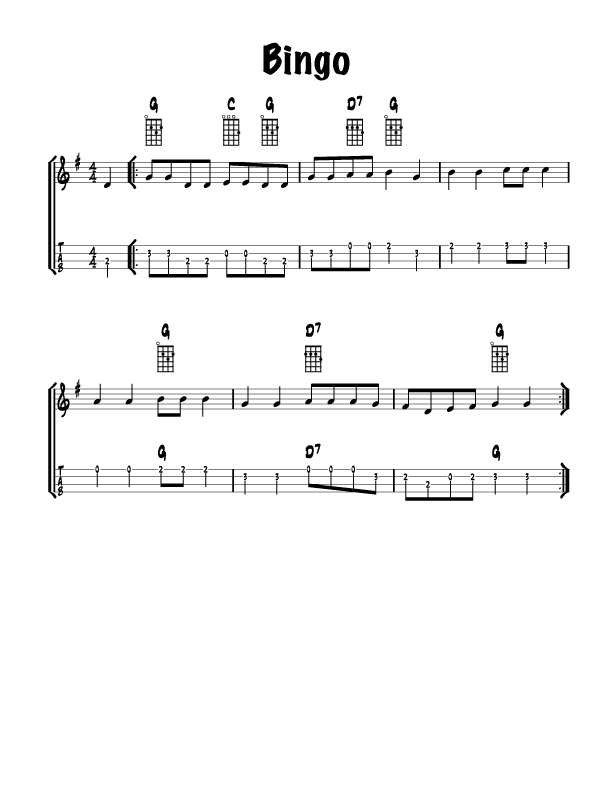
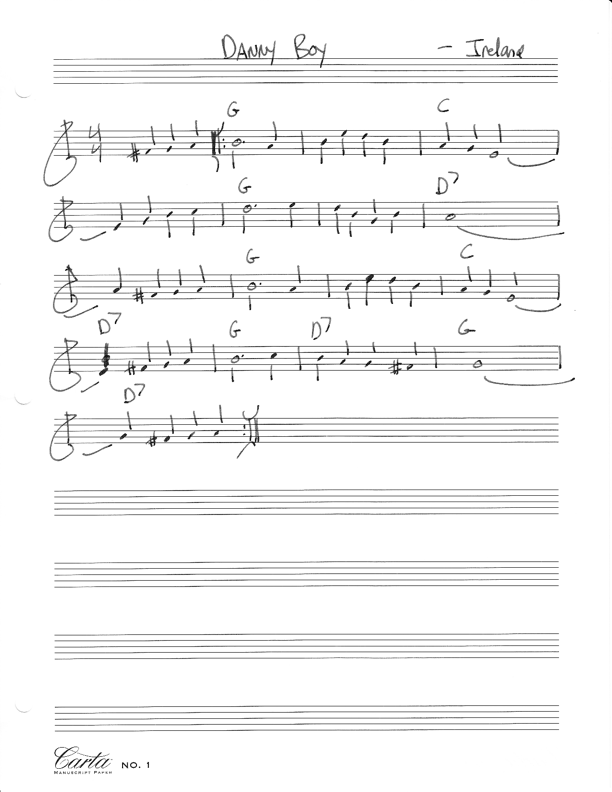
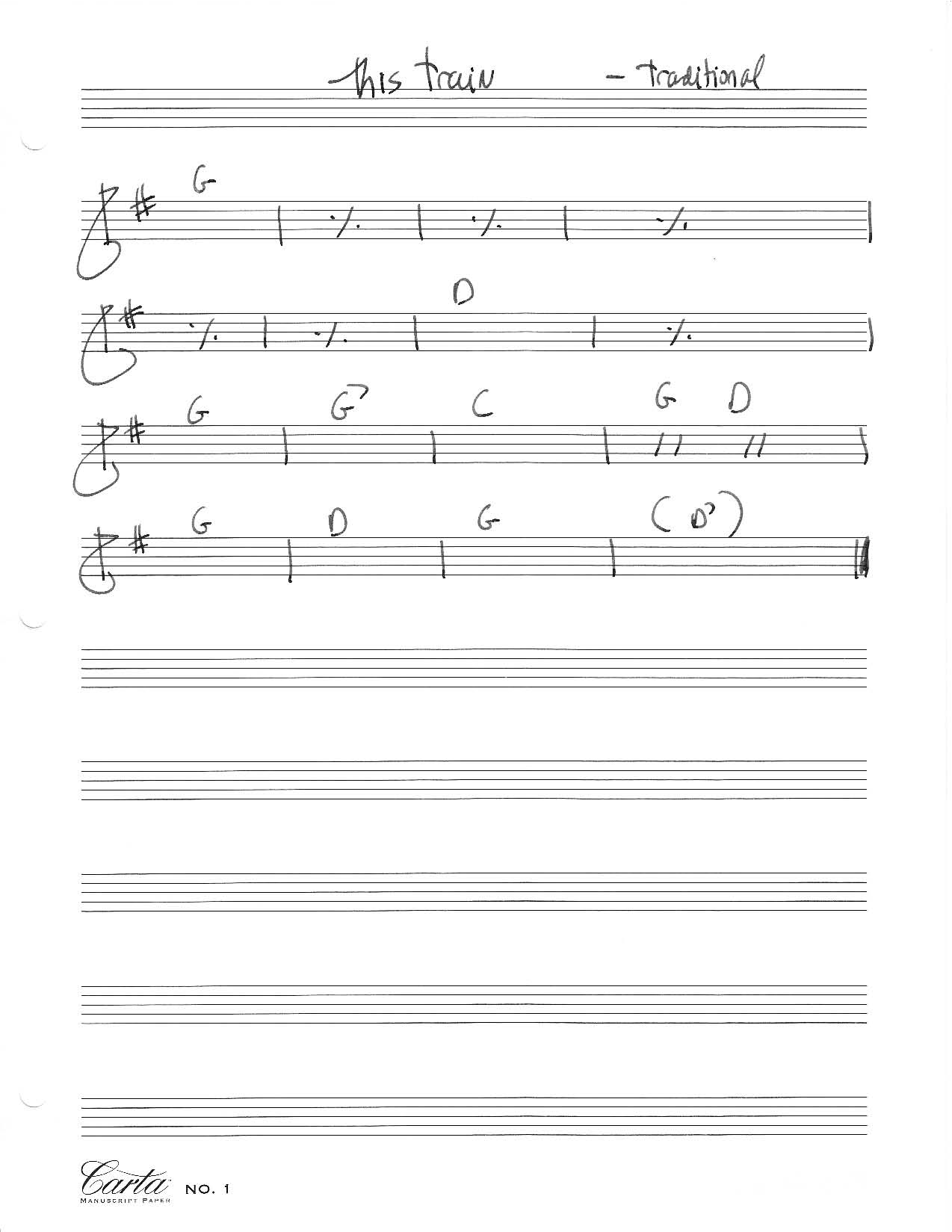

.jpg)